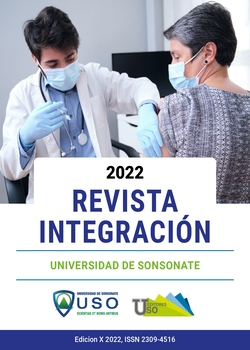Challenges of the State in the improvement of educational competencies of families in the coastal-marine strip of El Salvador.
DOI:
https://doi.org/10.5377/ri.v1i10.18457Keywords:
Costal zone, Educational competencies, Illiteracy, SchoolingAbstract
El Salvador is a Central American country with a 320 km coastline along the Pacific Ocean, divided into two regions: the low and the high coast. These coastal areas account for more than 25% of the country's total population, mostly women and children under 18 years. This research was aimed at evaluating the educational competencies of knowledge, skills, and attitudes of the families residing in these coastal areas, specifically in areas related to literacy, formal education, and the use of technology; in this way, existing educational gaps were identified; for this purpose, a survey was conducted with 1810 families, interviewing one member of each family. The survey results reveal that 22.6% of people under study have no formal education, and the average number of years of schooling is 2.72, showing a large disparity as compared to the national average of 7.1 years in 2019, and 19.3% of them do not know how to read or write. In addition, only 31.5% of these subjects know how to use a computer. These results, added to the low technical and educational level of the people working in the management of coastal marine resources, generate relatively low salaries. To improve this situation, it is proposed to work with a territorial and capacity development approach to strengthen the educational skills and competencies of the population in the coastal areas of El Salvador.
136
Downloads
Published
How to Cite
Issue
Section
License

This work is licensed under a Creative Commons Attribution-NonCommercial-ShareAlike 4.0 International License.
You are free to:
- Share — copy and redistribute the material in any medium or format
- Adapt — remix, transform, and build upon the material
- The licensor cannot revoke these freedoms as long as you follow the license terms.
Under the following terms:
- Attribution — You must give appropriate credit , provide a link to the license, and indicate if changes were made . You may do so in any reasonable manner, but not in any way that suggests the licensor endorses you or your use.
- NonCommercial — You may not use the material for commercial purposes .
- ShareAlike — If you remix, transform, or build upon the material, you must distribute your contributions under the same license as the original.
- No additional restrictions — You may not apply legal terms or technological measures that legally restrict others from doing anything the license permits.
Notices:
You do not have to comply with the license for elements of the material in the public domain or where your use is permitted by an applicable exception or limitation .
No warranties are given. The license may not give you all of the permissions necessary for your intended use. For example, other rights such as publicity, privacy, or moral rights may limit how you use the material.




